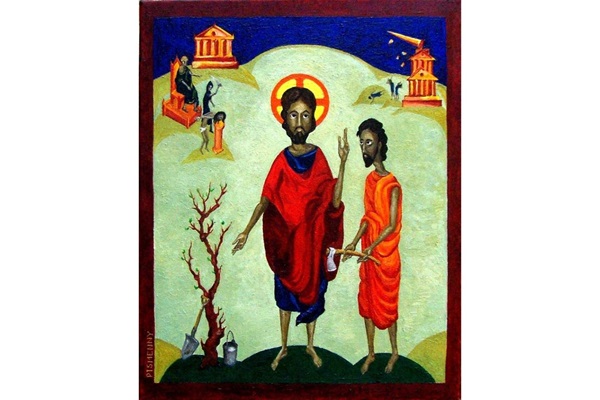Second in a series of devotions for Holy Week written by United Methodist pastors.
Scripture: Mark 11:12-14; 20-25 CEB
Artist: Alexey Pismenny
The next day, after leaving Bethany, Jesus was hungry. From far away, he noticed a fig tree in leaf, so he went to see if he could find anything on it. When he came to it, he found nothing except leaves, since it wasn’t the season for figs. So he said to it, “No one will ever again eat your fruit!” His disciples heard this...
Early in the morning, as Jesus and his disciples were walking along, they saw the fig tree withered from the root up. Peter remembered and said to Jesus, “Rabbi, look how the fig tree you cursed has dried up.”
Jesus responded to them, “Have faith in God! I assure you that whoever says to this mountain, ‘Be lifted up and thrown into the sea’—and doesn’t waver but believes that what is said will really happen—it will happen. Therefore I say to you, whatever you pray and ask for, believe that you will receive it, and it will be so for you. And whenever you stand up to pray, if you have something against anyone, forgive so that your Father in heaven may forgive you your wrongdoings.”
Devotion
Jesus’ cursing the fig tree is a strange event which elicits questions about what Jesus intended to communicate after he entered Jerusalem. Mark likes to write using a sandwich approach to convey the passage of time, changing locations and overall meaning. Jesus saw the fig tree and cursed it for not bearing fruit. Then he went to the Temple and drove out the money changers. The following morning, Peter pointed to the fig tree again and noticed it had withered.
The barren and withered fig tree and the commerce-oriented Temple are meant to inform each other. In each instance, they were not living their purpose. Despite displaying lots of leaves, this fig tree bore no fruit. And despite all the activity going on in the Temple courts, worship and prayer were not the primary focus. Jesus used both instances to teach how important it is to live on purpose.
When the pandemic caused churches to suspend in-person worship and leaders to minister differently, churches found they needed to re-examine the question of purpose. Discerning and living one’s calling will help guide churches and individuals through stress and uncertainty.
Living on purpose strengthens faith and gives power to our words because they are linked to God’s purpose for us.
The lesson of the fig tree raises the question for us: What does it mean to live on purpose today?
For reflection
Living on purpose comes from following God’s inner compass.
Prayer
Purposeful God, we seek to be true to your calling for us today. We want to be about what matters in the world. Guide us and give us courage to be the people you call us to be, through Jesus Christ our Lord. Amen.
The Rev. Dr. Rod Miller serves Mount Vernon Place United Methodist Church in Baltimore, Maryland. Media contact: Joe Iovino, United Methodist Communications.





